Do you have a question about the Yamaha XMAX 2022 and is the answer not in the manual?
Outlines owner's responsibilities for safe and proper scooter operation.
Advises on pre-operation checks and safe riding practices to avoid accidents.
Details essential protective gear like helmets, jackets, and gloves for rider safety.
Warns about the dangers of carbon monoxide from engine exhaust in enclosed spaces.
Provides guidelines on adding cargo to maintain stability and avoid accidents.
Offers additional tips for safe riding, including signaling and cornering.
Identifies components and parts of the scooter from the left side view.
Identifies components and parts of the scooter from the right side view.
Details the location and function of various controls and instruments on the handlebar.
Outlines FCC compliance rules for the smart key system.
Proper use and care of keys for operation and emergencies.
Instructions on checking and replacing the smart key battery.
Operation of the main switch for vehicle power.
Steps to activate vehicle power.
Procedure to secure the handlebars.
Explaining dashboard indicators and warnings.
Function of the speed display.
Information on the multi-function meter unit.
Controls on the handlebars.
Description of the Anti-lock Brake System.
Functionality of the TCS.
Location and types of storage compartments.
Checks related to fuel level, line, and overflow hose before operation.
Checks for engine oil level and potential leakage.
Checks for front brake operation, pad wear, and fluid level.
Checks for rear brake operation, pad wear, and fluid level.
Checks for tire damage, tread depth, and air pressure.
Guidelines for breaking in the engine during the initial period of use.
Step-by-step instructions for starting the scooter's engine.
Procedures for safely moving off from a standstill.
Guidance on proper braking techniques and considerations for different road conditions.
Advice on riding style to improve fuel efficiency.
Location and purpose of the onboard tool kit.
A chart detailing general maintenance tasks and lubrication intervals.
Procedures for checking, changing engine oil, and replacing the oil filter.
Tire inspection, pressure, and information.
Guidance on locating and replacing vehicle fuses.
A guide to diagnosing and fixing common vehicle problems.
How to operate the vehicle if the smart key is lost.
Advice on cleaning matte-finished parts to avoid damage.
General instructions for washing, cleaning, and polishing the vehicle.
Guidelines for storing the vehicle properly in a cool, dry place.
Specific steps for preparing the vehicle for long-term storage.
Provides detailed measurements of the scooter's overall size and geometry.
Lists engine specifications including cycle, cooling, and displacement.
Specifies the type, size, manufacturer, and model of the front tire.
Specifies the type, size, manufacturer, and model of the rear tire.
Lists the wattage for various lights on the vehicle.
Explains where to find and record vehicle identification and serial numbers.
Instructions on how to report potential safety defects to NHTSA and Yamaha.
Details the terms and conditions of the limited warranty for the scooter.
Information about the optional extended service plan for added protection.
Outlines owner's responsibilities for safe and proper scooter operation.
Advises on pre-operation checks and safe riding practices to avoid accidents.
Details essential protective gear like helmets, jackets, and gloves for rider safety.
Warns about the dangers of carbon monoxide from engine exhaust in enclosed spaces.
Provides guidelines on adding cargo to maintain stability and avoid accidents.
Offers additional tips for safe riding, including signaling and cornering.
Identifies components and parts of the scooter from the left side view.
Identifies components and parts of the scooter from the right side view.
Details the location and function of various controls and instruments on the handlebar.
Outlines FCC compliance rules for the smart key system.
Proper use and care of keys for operation and emergencies.
Instructions on checking and replacing the smart key battery.
Operation of the main switch for vehicle power.
Steps to activate vehicle power.
Procedure to secure the handlebars.
Explaining dashboard indicators and warnings.
Function of the speed display.
Information on the multi-function meter unit.
Controls on the handlebars.
Description of the Anti-lock Brake System.
Functionality of the TCS.
Location and types of storage compartments.
Checks related to fuel level, line, and overflow hose before operation.
Checks for engine oil level and potential leakage.
Checks for front brake operation, pad wear, and fluid level.
Checks for rear brake operation, pad wear, and fluid level.
Checks for tire damage, tread depth, and air pressure.
Guidelines for breaking in the engine during the initial period of use.
Step-by-step instructions for starting the scooter's engine.
Procedures for safely moving off from a standstill.
Guidance on proper braking techniques and considerations for different road conditions.
Advice on riding style to improve fuel efficiency.
Location and purpose of the onboard tool kit.
A chart detailing general maintenance tasks and lubrication intervals.
Procedures for checking, changing engine oil, and replacing the oil filter.
Tire inspection, pressure, and information.
Guidance on locating and replacing vehicle fuses.
A guide to diagnosing and fixing common vehicle problems.
How to operate the vehicle if the smart key is lost.
Advice on cleaning matte-finished parts to avoid damage.
General instructions for washing, cleaning, and polishing the vehicle.
Guidelines for storing the vehicle properly in a cool, dry place.
Specific steps for preparing the vehicle for long-term storage.
Provides detailed measurements of the scooter's overall size and geometry.
Lists engine specifications including cycle, cooling, and displacement.
Specifies the type, size, manufacturer, and model of the front tire.
Specifies the type, size, manufacturer, and model of the rear tire.
Lists the wattage for various lights on the vehicle.
Explains where to find and record vehicle identification and serial numbers.
Instructions on how to report potential safety defects to NHTSA and Yamaha.
Details the terms and conditions of the limited warranty for the scooter.
Information about the optional extended service plan for added protection.
| Engine Type | Liquid-cooled, 4-stroke, SOHC, 4-valve |
|---|---|
| Displacement | 292 cc |
| Bore x Stroke | 70.0 mm x 75.9 mm |
| Compression Ratio | 10.9:1 |
| Maximum Power | 20.6 kW (28.0 PS) @ 7, 250 rpm |
| Fuel System | Fuel Injection |
| Ignition System | TCI |
| Transmission | V-Belt Automatic |
| Front Suspension | Telescopic fork |
| Rear Suspension | Unit Swing |
| Front Tire | 120/70-15 |
| Rear Tire | 140/70-14 |
| Overall Length | 2, 185 mm |
| Overall Width | 775 mm |
| Overall Height | 1, 415 mm |
| Seat Height | 795 mm |
| Wheelbase | 1, 540 mm |
| Ground Clearance | 135 mm |
| Wet Weight | 179 kg |
| Maximum Torque | 29.0 Nm (2.9 kg-m) @ 5, 750 rpm |
| Front Brake | Hydraulic single disc, Ø267 mm |
| Rear Brake | Hydraulic single disc, 245 mm |
| Fuel Tank Capacity | 13 liters |


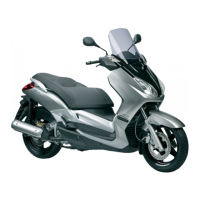

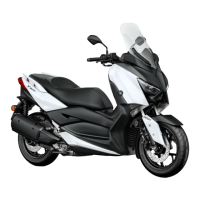
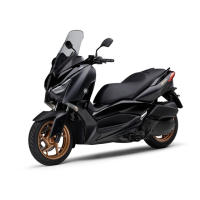
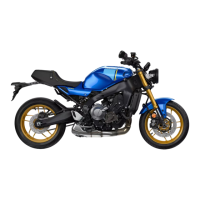

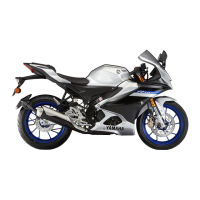
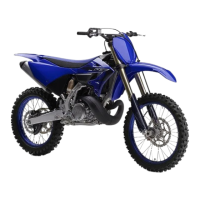
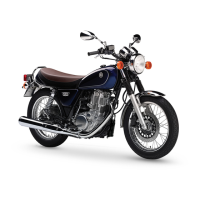
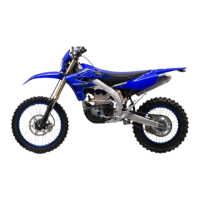
